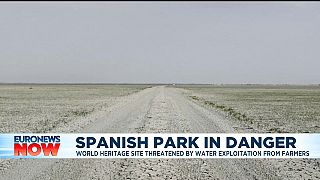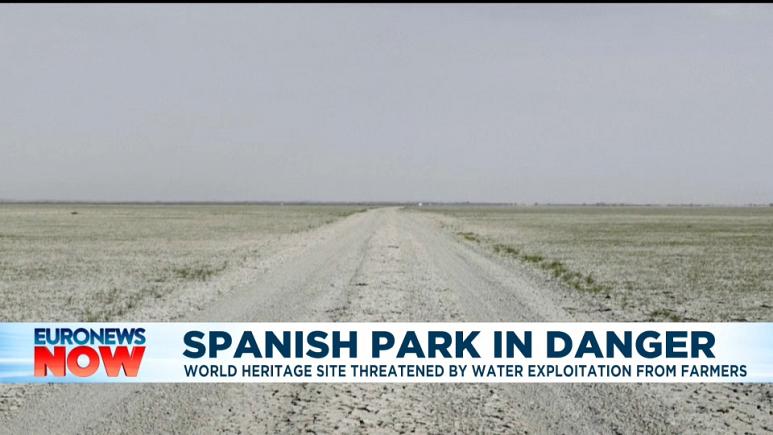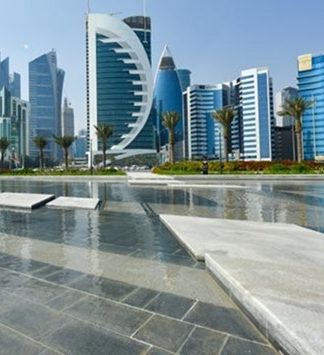Spain’s Doñana National Park under threat as groundwater pumping continues

Doñana National Park, in southern Spain, is home to one of Europe’s largest wetlands and is being threatened by intensive farming.
Scientists say water supplies to the park are have declined dramatically due to climate change and the over-extraction of water by neighbouring strawberry farms, often through illegal wells.
This issue strongly divides those who wish to preserve the park and the strawberry farmers.
Juan Romero, representative from ‘Save Doñana’ said “The overexploitation of groundwater will destroy the wetlands of Doñana if there are no radical changes. And radical changes would involve: stopping the overexploitation of the aquifer, and closing wells, that’s what the administration has to do. Not extracting so much water, they need to limit current extractions, and reduce them by half.”
“The crops need the water they need,” Manuel Delgado, spokesman for the Doñana Gate Farmers Association explained. “In the municipality of Almonte we have over 4,000 hectares of irrigated land, if they reduce the water allocation by half, we would have to reduce the crop by half, and we would have to reduce over 2,000 hectares of cultivation. That is a real ruin.”
Rafael Segovia, President of the Spanish far-right party VOX, refutes claims that the nature reserve is in danger and proposes a solution that environmentalists disagree with.
“In Huelva there isn’t a water problem, it is a lie, an artificial problem that has been created,” explained Segovia. “Doñana will not be in danger if we do these works. The problem has a straightforward solution, which is to transfer water from the El Chansa river to the Condado, it’s as easy as that.”
Juanjo Carmona, WWF Doñana Coordinator said, “It’s a solution but its days are numbered because when there is a lack of rain, it’s everywhere. Climate change is affecting us and it is affecting the water levels. we need to rethink the model in Doñana.”
At this time of year, the park should be covered in water and hosts pink flamingos.
It is the home to thousands of species of flora and fauna and has over 100.000 hectares of lagoons forests and marches.
However, the world heritage site is facing an uncertain future due to human activity and questionable political decisions.




















 SHOCKING STATEMENTS DURING IRAN VISIT: SAUDI DEFENCE MINISTER REVEALS THE PLAN!
SHOCKING STATEMENTS DURING IRAN VISIT: SAUDI DEFENCE MINISTER REVEALS THE PLAN!









